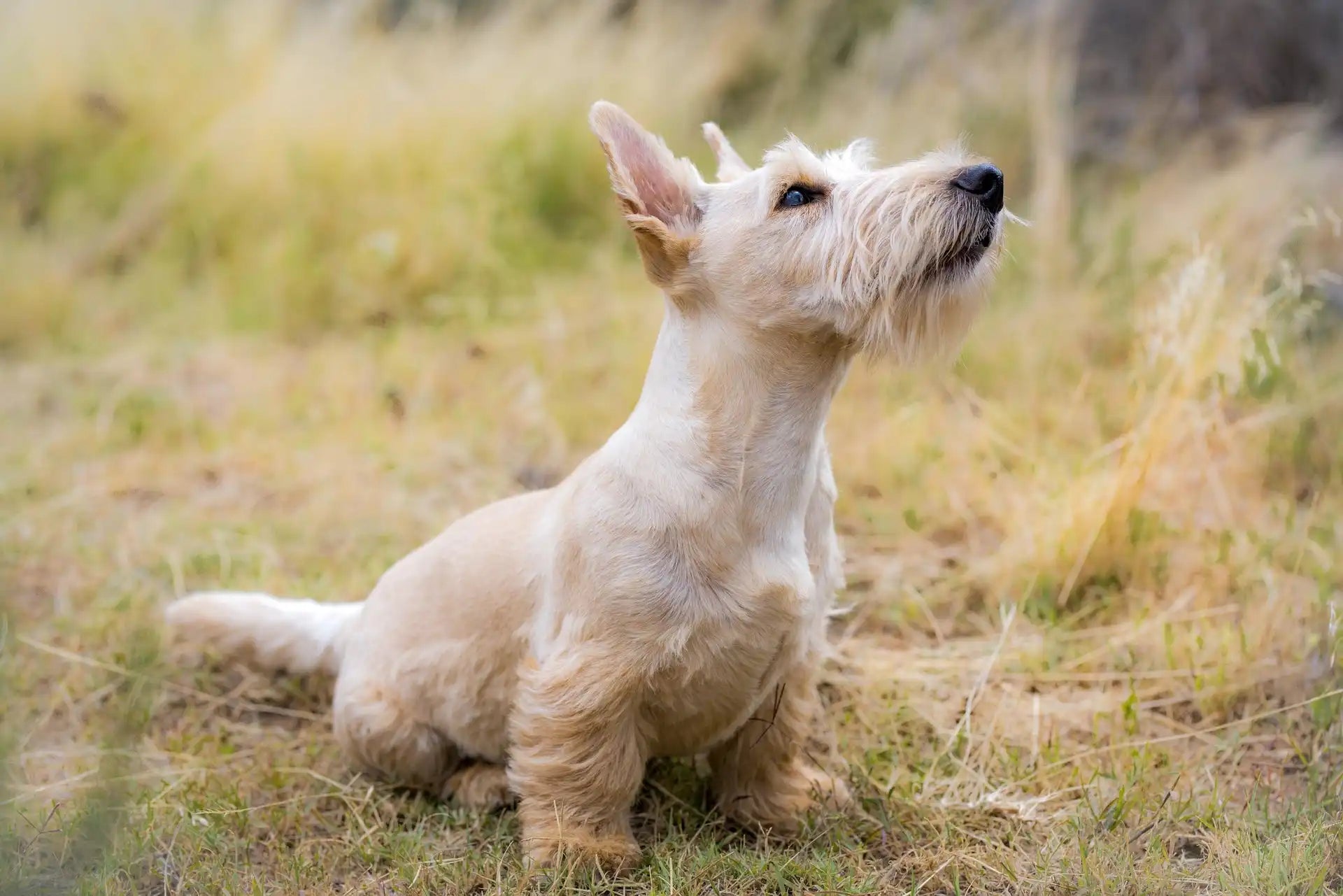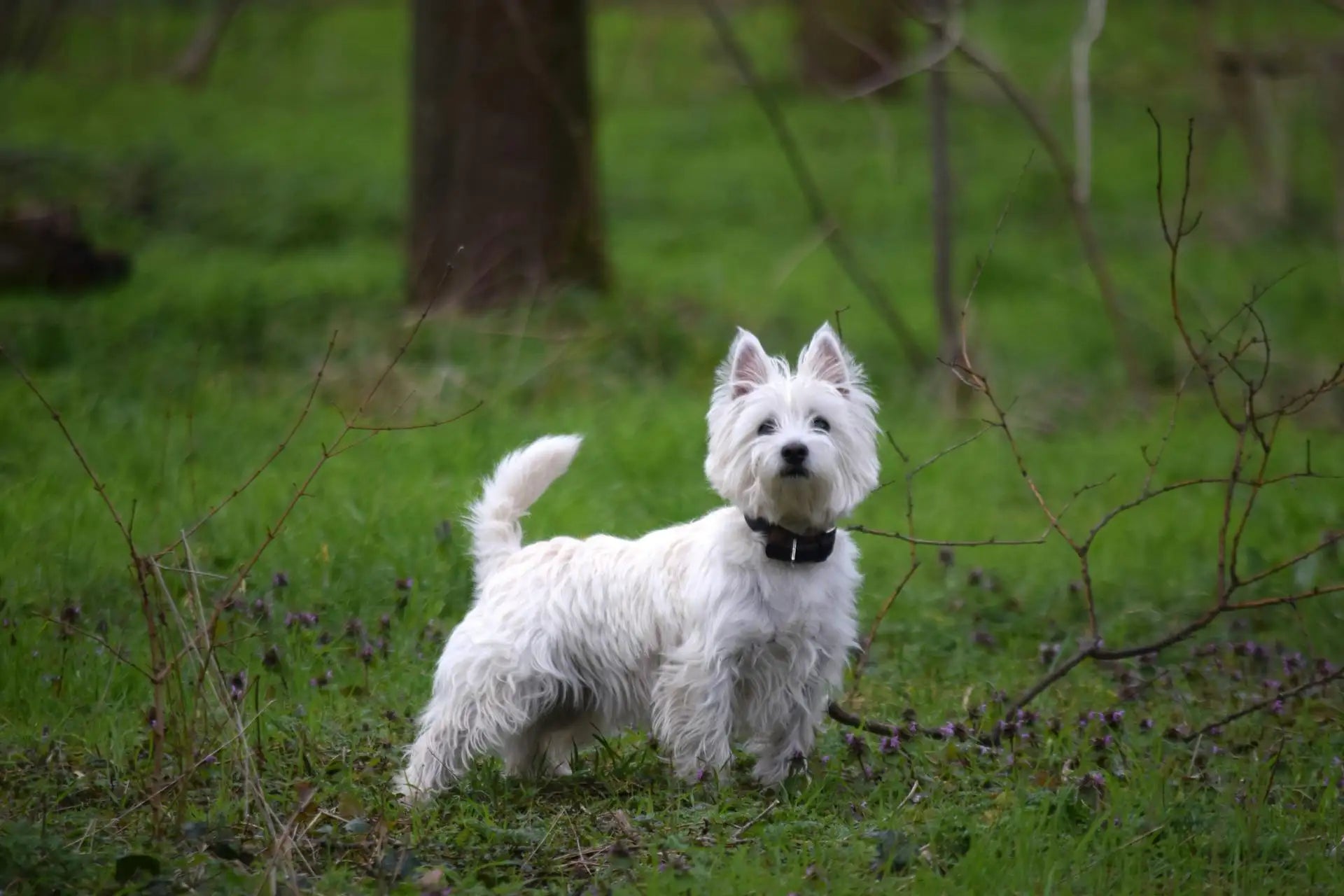
Scottish Terrier: A Practical Guide for Dog Lovers!
Quick Facts Overview
|
Trait |
Details |
|
Size Category |
Small |
|
Height & Weight |
25–28 cm; 8.5–10.5 kg |
|
Coat Type & Colours |
Wiry topcoat with soft undercoat; black, wheaten, or brindle |
|
Energy Level |
Moderate |
|
Origin |
Scotland |
|
Grooming Needs |
Moderate to High |
|
Temperament |
Independent, alert, loyal, dignified |
|
Trainability |
Moderate |
|
Compatibility |
Best for experienced owners and adult households |
|
Lifespan |
12–15 years |
Breed Origins and History
The Scottish Terrier, affectionately known as the “Scottie,” is one of the oldest and most iconic terrier breeds. Originating in the Highlands of Scotland, these dogs were bred to hunt and eliminate vermin on farms and estates. Their tough build, short legs, and strong jaws made them ideal for burrowing after prey like rats and badgers. With their dignified demeanour and bold nature, Scotties quickly found favour beyond the farms—becoming the chosen breed of Presidents and even making it to Monopoly boards around the world.
Personality and Temperament
Scottish Terriers are confident little dogs with a proud, no-nonsense attitude. They’re affectionate with their family but can be reserved with strangers. They have a strong sense of independence and aren’t overly clingy—but that doesn’t mean they don’t love their humans fiercely. If you're after a dog with character, dignity, and loyalty, the Scottie fits the bill.
Trainability and Intelligence
These dogs are smart and have a mind of their own. They’re not the kind to blindly follow commands, but with consistency and positive reinforcement, they can become well-mannered and responsive companions.
-
Respond to clear boundaries and calm leadership
-
Early socialisation is essential to avoid reactivity
-
May get stubborn—keep training sessions short and engaging
-
A snug training harness supports better leash manners
-
Keep tasty rewards in a treat bag to keep them motivated
Exercise and Activity Requirements
Scotties don’t need hours of intense exercise, but they do enjoy a solid daily routine. Their terrier nature means they love sniffing, exploring, and engaging their sharp minds.
-
30–45 minutes of activity per day
-
Regular walks, backyard patrols, and indoor games
-
Enjoy puzzle toys and hide-and-seek games
-
A hands-free dog lead offers ease for leisurely strolls
-
Best walked on-lead due to strong prey drive
Physical Characteristics
Scotties are instantly recognisable with their distinctive beard, wiry coat, and confident stance. Their short legs and strong body make them compact yet powerful.
-
Height: 25–28 cm
-
Weight: 8.5–10.5 kg
-
Coat: Harsh outer coat with a soft undercoat
-
Colours: Most commonly black, but also wheaten or brindle
-
Fit best in small dog gear
Black vs White (Wheaten) Scottish Terriers
The Black Scottish Terrier is the most iconic and widely recognised version of the breed—known for its bold silhouette and regal look. It’s often the image that comes to mind when people think “Scottie dog.”
The so-called White Scottish Terrier isn’t truly white, but a lighter colour officially called Wheaten. These dogs have a soft, cream or pale gold coat that can appear white in photos or bright light. Wheaten Scotties are rarer and often stand out with their lighter, elegant appearance, but they share the same build, temperament, and loyal personality as their darker counterparts.
Living Environment Suitability
Scottish Terriers are well-suited to both urban and suburban living—as long as their mental and physical needs are met. They love having a space to patrol, but can do well in apartments with daily outings.
-
Good in homes with small yards or secure courtyards
-
Thrive on routine and territory
-
Prefer a calm environment—best with older children or adults
-
A cosy dog bed helps them wind down after walks
-
Use a car harness for safe travel
Grooming and Maintenance
That signature Scottie coat does require upkeep. While they don’t shed heavily, they benefit from regular brushing and periodic professional grooming to keep their coat tidy.
-
Brush 2–3 times weekly to remove dead hair
-
Hand stripping or clipping every 6–8 weeks is ideal
-
Clean beard after meals to avoid staining
-
Use a gentle soft collar to avoid damaging their coat
-
Keep ears clean and nails trimmed regularly
Common Health Issues
Scotties are generally hardy, but like many small breeds, they have some known genetic concerns. Regular check-ups and preventative care can go a long way.
-
Common concerns: Scottie cramp, allergies, bladder cancer, and joint issues
-
Watch for signs of stiffness, itching, or discomfort
-
Maintain healthy weight and moderate activity
-
Provide joint support with an orthopaedic dog bed as they age
Diet and Feeding Guidelines
Scotties are compact but strong, so they do best on a diet that supports their energy levels and joint health. Watch their weight to avoid stress on their build.
-
Puppies: ½ to 1 cup per day, split into 3 meals
-
Adults: 1–1.5 cups daily across 2 meals
-
Choose small-breed formulas with joint and coat support
-
Make water accessible at all times
-
A portable bowl set helps on road trips or longer walks
Compatibility with People and Other Pets
Scotties bond closely with their family but can be choosy with others. They often do well with other dogs when properly introduced but may show dominance.
-
Affectionate and loyal with their humans
-
May be wary of unfamiliar pets or people
-
Early socialisation is important for harmony in multi-pet homes
-
A coupler leash helps if walking with another dog
Behavioural Issues and Management
This breed is known for having a bit of a stubborn streak. But that’s part of their charm. With patience and structure, they’re incredibly rewarding companions.
-
May bark to alert or out of boredom
-
Can get territorial if not socialised early
-
Strong prey drive—supervise around small animals
-
A no-pull harness helps manage walks
-
Offer durable toys for chewing and enrichment
Essential Gear for Scottish Terriers
For Walking and Control
Comfort and Rest
Style and Function
FAQs: Scottish Terrier
1. Are Scottish Terriers good pets?
Yes, Scottish Terriers are loyal and independent companions. They form strong bonds with their families, are naturally alert, and can be quite protective. They’re best suited to owners who understand their strong-willed nature.
2. Are Scottish Terriers like to cuddle?
Scotties enjoy being near their people but aren’t overly clingy. They’ll often choose when they want affection. They’re not lap dogs, but they do enjoy companionship on their own terms.
3. Are Scottish Terriers high maintenance?
Their wiry coat requires regular brushing and professional grooming every couple of months. They’re also strong-minded, so ongoing training and mental stimulation are key. They’re not high-energy but do need daily walks.
4. Are Scottish Terriers good with kids?
They can be good with older, respectful children. Due to their independent temperament, they may not tolerate rough play or loud environments. Early socialisation is important for family settings.
5. Do Scottish Terriers bark a lot?
Yes, they are naturally vocal and will bark at anything they perceive as a threat. This trait makes them excellent watchdogs, but it can be managed with consistent training from an early age.
6. Are Scottish Terriers easy to train?
They’re intelligent but also independent. While they can learn quickly, they may resist commands if not properly motivated. Short, consistent sessions with positive reinforcement work best.
7. What are the downsides of Scottish Terriers?
They can be stubborn and territorial, especially with other pets. Their prey drive is strong, which means they might chase smaller animals. They also require firm, consistent handling.
8. How much is a Scottish Terrier in Australia?
In Australia, a Scottish Terrier puppy typically costs between $3,000 and $5,000. Price varies based on breeder reputation, lineage, and whether the dog comes with pedigree papers and health checks.
9. How long do Scottish Terriers live?
Scottish Terriers usually live between 11 and 13 years. With good care, a balanced diet, regular exercise and vet visits, some can live even longer.
10. What is the difference between a Scottish Terrier and a Westie?
Scottish Terriers are typically black or brindle and have a more reserved, serious nature. Westies are all white, usually more playful, and tend to be slightly more sociable. Both have distinct grooming needs and personalities.
Final Thoughts
The Scottish Terrier is a bold little dog with a huge heart and a dignified spirit. They’re not for everyone—but for those who understand their unique personality, the loyalty and character they bring is unmatched.
Need the right gear for your Scottie?
Visit EzyDog for comfortable, reliable accessories made for small dogs with big attitudes.





Leave a comment
This site is protected by hCaptcha and the hCaptcha Privacy Policy and Terms of Service apply.